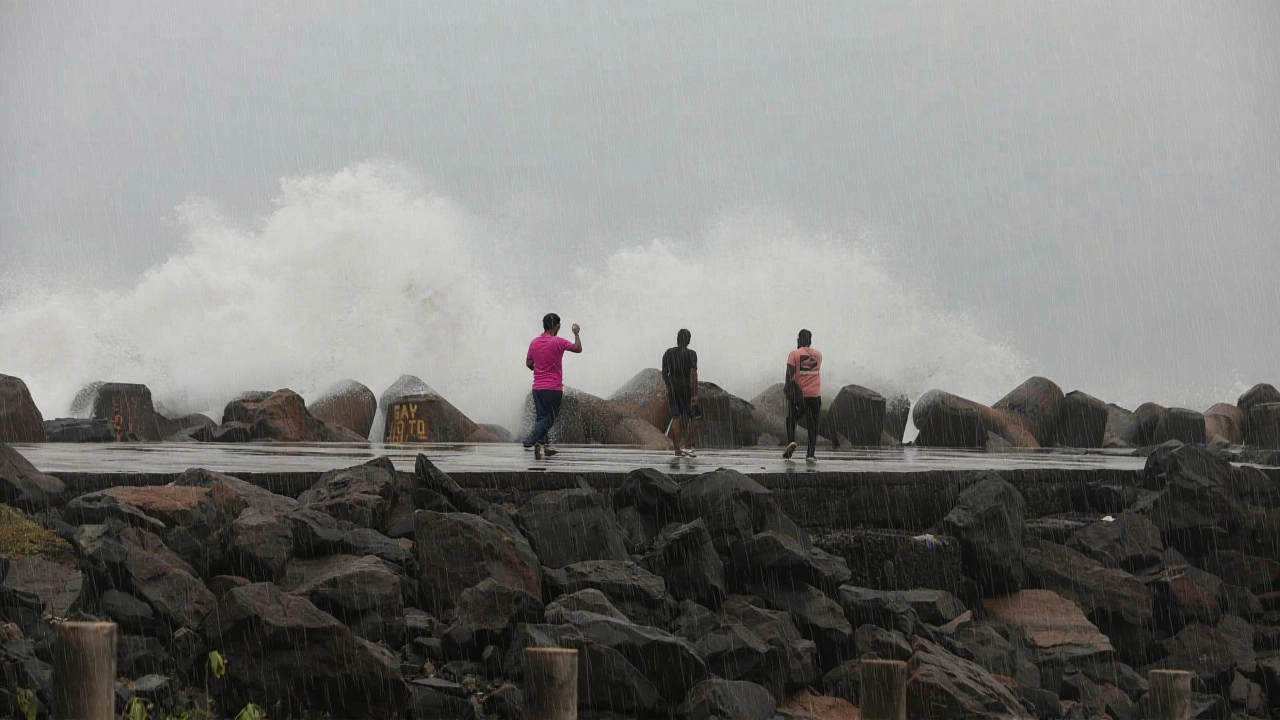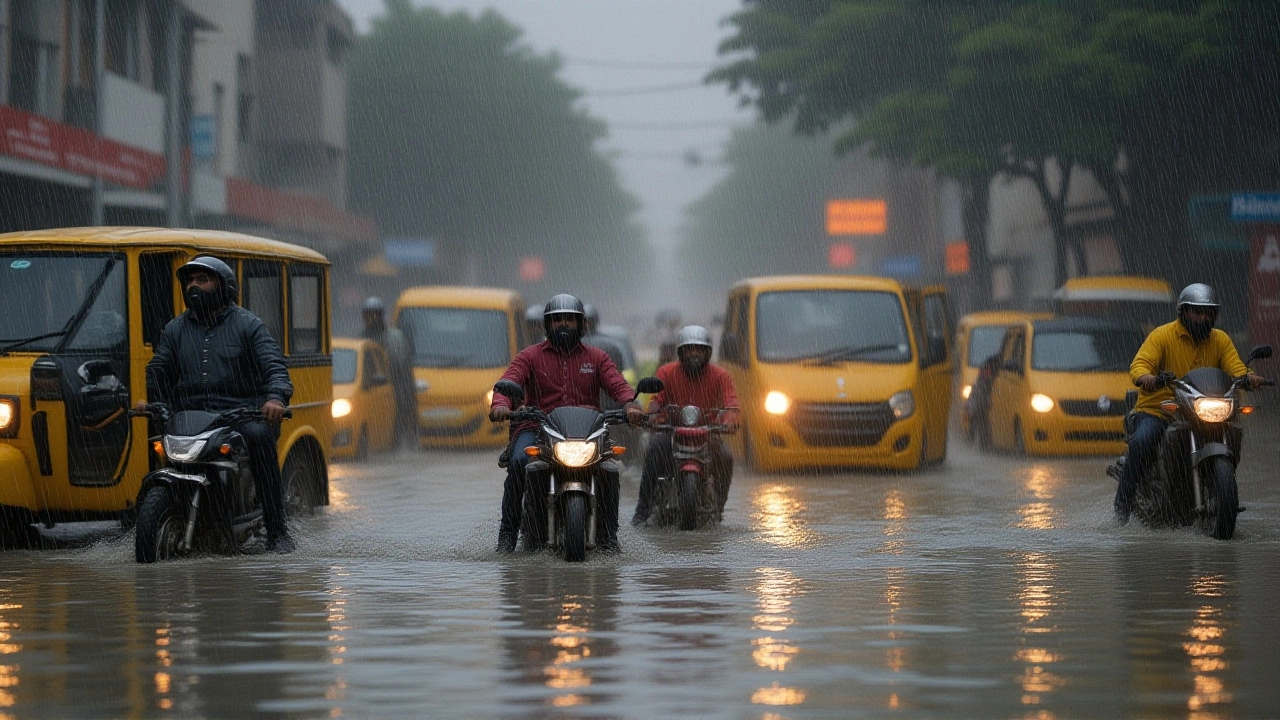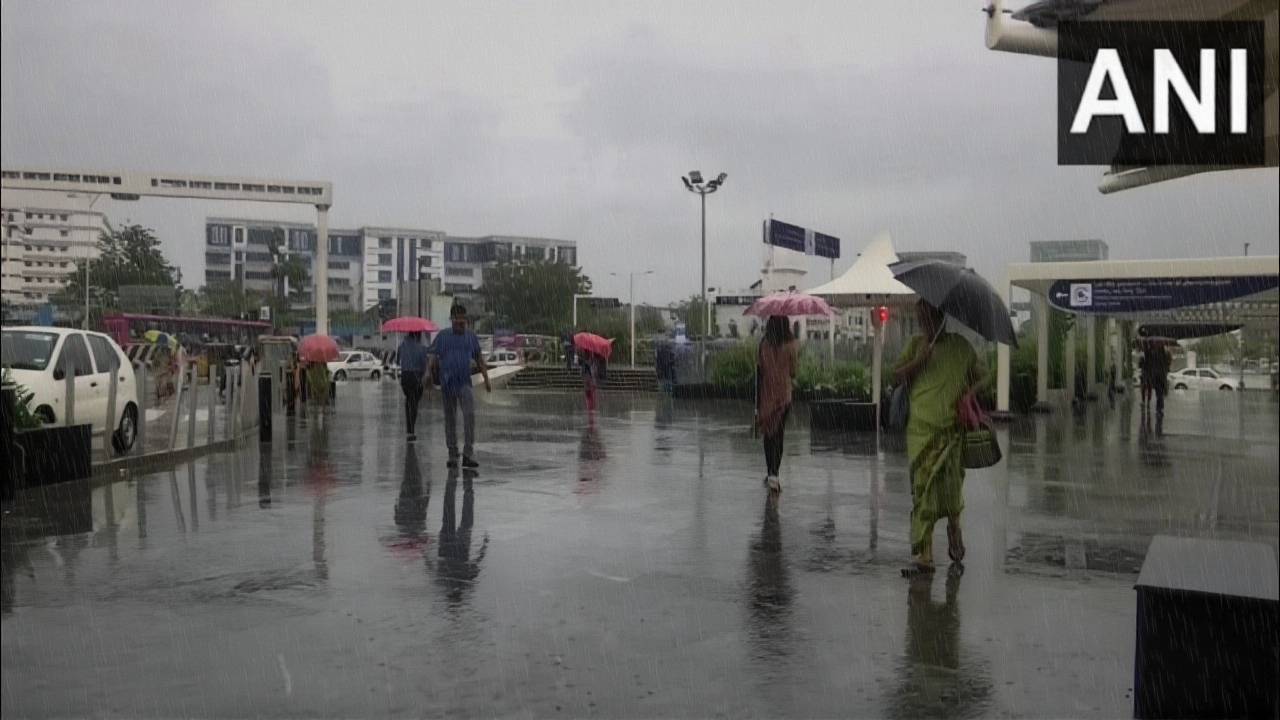Cyclone Mandous Hits Southeast India, Triggering Evacuations and Cold Wave
16 Nov, 2025Severe Cyclonic Storm Mandous slammed into the southeastern coast of India between Puducherry and Sriharikota just before dawn on November 29, 2025, with winds reaching 90 km/h (55 mph). What began as a modest low-pressure system in the Bay of Bengal just days earlier had rapidly intensified into the first tropical cyclone to strike India since May’s Asani — and the first landfall since Sitrang swept through the northeast in October. The India Meteorological Department confirmed the storm’s strength, classifying it as a severe cyclonic storm — equivalent to a tropical storm on the Saffir-Simpson scale. But the real story didn’t end when the winds died down. As the skies cleared, a bitter cold wave rolled in, turning relief into shivering discomfort for millions across Andhra Pradesh and Telangana.
Preparations on a Massive Scale
By Thursday, November 27, the IMD had already issued an orange alert for 13 districts in Tamil Nadu, while Andhra Pradesh, Odisha, and Chhattisgarh were on high alert. Seven other states, including West Bengal, Maharashtra, and Kerala, were under yellow alert. Authorities didn’t wait. Over 10,000 people were moved from low-lying coastal villages to emergency shelters. In Tamil Nadu, the National Disaster Response Force and State Disaster Response Force teams were deployed before sunrise. Schools shut down. Fishermen were ordered to stay ashore — no exceptions. The Andhra Pradesh State Disaster Management Authority warned of heavy rain as early as November 24, even before Mandous fully formed, a sign of how seriously officials were taking the threat.
Transportation ground to a halt. South Central Railway cancelled dozens of trains. IndiGo and Air India Express grounded all flights from Vishakhapatnam Airport. And in a striking show of coordination, 16,000 police personnel were stationed along the expected landfall zone — a number reported by The Hindu — ready to assist with evacuations, traffic control, and emergency response.
The Landfall and Immediate Aftermath
Mandous made landfall just before 4 a.m. on November 29, weaker than some forecasts predicted but still powerful enough to knock out power lines, snap trees, and flood streets in Puducherry and coastal Andhra. Rainfall totals exceeded 200 mm (8 inches) in some areas within 24 hours. Yet, thanks to the massive evacuation effort, there were no confirmed fatalities — a rare win in India’s cyclone-prone history. Prime Minister Narendra Modi held emergency calls with the Chief Ministers of Tamil Nadu, Andhra Pradesh, and Odisha, pledging full central support. "The priority is life," he said in a statement released shortly after the storm passed.
But here’s the twist: as the rain stopped, the temperature didn’t rise — it plummeted. By Saturday evening, temperatures in Hyderabad dropped to 11°C (52°F), the lowest in 17 years for late November. In Kurnool and Nellore, people woke up to frost on rooftops. The Hyderabad Meteorological Centre warned the cold snap would last 4–5 more days, blaming the cyclone’s passage for disrupting normal atmospheric flow. "It’s like the storm sucked all the warmth out of the region," said Dr. Arun Kumar, a senior climatologist at the Indian Institute of Tropical Meteorology. "The moisture-laden winds that fed Mandous also pulled the warm air mass away, leaving behind a vacuum of cold air from the north."

Why This Storm Was Different
Unlike many cyclones that weaken quickly after landfall, Mandous left behind a chain reaction. The Andhra Pradesh State Disaster Management Authority had already flagged a developing low-pressure system in the Bay of Bengal as early as November 19 — a precursor that wasn’t expected to become a depression. Yet, by November 21, it had organized enough to trigger Mandous. AccuWeather’s Jason Nicholls noted this rapid intensification was unusual for late November. "We’ve seen cyclones form this late before — 2018’s Titli, for example — but rarely with this much speed and without a strong upper-level trigger. This one just… appeared," he said.
It also came on the heels of Sitrang, which had drenched northeast India just weeks earlier. That meant soil was already saturated across much of southern India, increasing the risk of flash floods even after the storm passed. In coastal villages near Kakinada, residents described water rising inside their homes despite the rain having stopped. "We thought we were safe," said 62-year-old Lakshmi Narayana, who lives in a flood-prone neighborhood near the Godavari delta. "Then the ground just kept leaking water. We had to move our furniture to the roof."
What’s Next?
The IMD has issued a new advisory: another low-pressure system is forming in the southeastern Bay of Bengal, with a 40% chance of developing into a depression by December 5. While it’s not expected to reach cyclone strength, it could bring more rain to already waterlogged areas. Meanwhile, the cold wave shows no signs of breaking. Hospitals in Hyderabad and Vijayawada are reporting spikes in respiratory illnesses among the elderly. Power utilities are scrambling to meet increased demand for heaters — many homes in the region have no central heating.
For now, the focus is on cleanup. The India Meteorological Department says the immediate threat is over, but the secondary impacts — power outages, crop damage, and the cold — could last weeks. Farmers in Rayalaseema have lost nearly 30% of their cotton and groundnut crops, according to state agriculture officials. Insurance claims are already flooding in.

Historical Context: A Pattern Emerging?
India’s coastal regions have seen a steady increase in cyclones over the past decade. In 2019, Fani killed 89 people in Odisha. In 2021, Tauktae hit Gujarat with 180 km/h winds. Last year, Asani caused widespread disruption in Andhra and Odisha. Mandous may not have been the strongest, but its timing and aftermath are telling. Three cyclones in seven months — Sitrang, Asani, Mandous — all forming in the Bay of Bengal. Scientists point to rising sea surface temperatures, which have climbed nearly 1.2°C above average since 2020 in this region. "We’re not seeing more cyclones — yet," says Dr. Meera Rao of the Indian Institute of Science. "But we’re seeing them form faster, hit harder, and leave behind weirder weather. That’s the new normal."
Frequently Asked Questions
How many people were evacuated because of Cyclone Mandous?
Over 10,000 residents from vulnerable coastal zones in Tamil Nadu, Andhra Pradesh, and Puducherry were moved to government-run rehabilitation centers before landfall. The evacuations were coordinated by the National Disaster Response Force and local police, with special attention given to elderly, disabled, and low-income households. No major casualties were reported, a direct result of the early and large-scale response.
Why did temperatures drop so sharply after the cyclone passed?
The cyclone’s movement pulled warm, moist air from the region into its circulation, creating a vacuum that allowed colder air from northern India to rush southward. This phenomenon, known as post-cyclonic cold surge, is rare but not unprecedented. The Hyderabad Meteorological Centre confirmed this was the strongest such event since 2007, with overnight lows dipping below 12°C in Telangana and Andhra Pradesh.
What was the impact on transportation and infrastructure?
All flights from Vishakhapatnam Airport were cancelled, and South Central Railway suspended over 80 trains between November 27 and 29. Power outages affected more than 200,000 households across coastal Andhra and Tamil Nadu. Roads in Puducherry and Nellore were submerged in places, with landslides reported near Tirupati. Emergency crews worked through the night to clear debris and restore basic services.
Are more storms expected soon?
Yes. The India Meteorological Department has flagged a new low-pressure system forming in the southeastern Bay of Bengal, with a 40% chance of developing into a depression by December 5. While not expected to reach cyclone strength, it could bring additional heavy rain to areas already saturated by Mandous, raising risks of further flooding and crop damage.
How does Cyclone Mandous compare to previous cyclones in India?
Mandous was weaker than major cyclones like Fani (2019) or Tauktae (2021), with winds at 90 km/h compared to over 180 km/h in those events. But its significance lies in timing — it’s the third cyclone to hit India in just seven months, and the first to cause a post-storm cold wave. Experts say this pattern — rapid intensification followed by unusual secondary impacts — is becoming more common due to warming ocean temperatures.
What damage did Mandous cause to agriculture?
Farmers in Rayalaseema and Coastal Andhra reported losing up to 30% of their cotton and groundnut crops due to flooding and wind damage. Rice paddies in northern Tamil Nadu were also submerged. The state agriculture department estimates losses exceeding ₹1,200 crore ($145 million), with many smallholders unable to recover without government aid. Crop insurance claims have surged since the storm passed.

 by
by